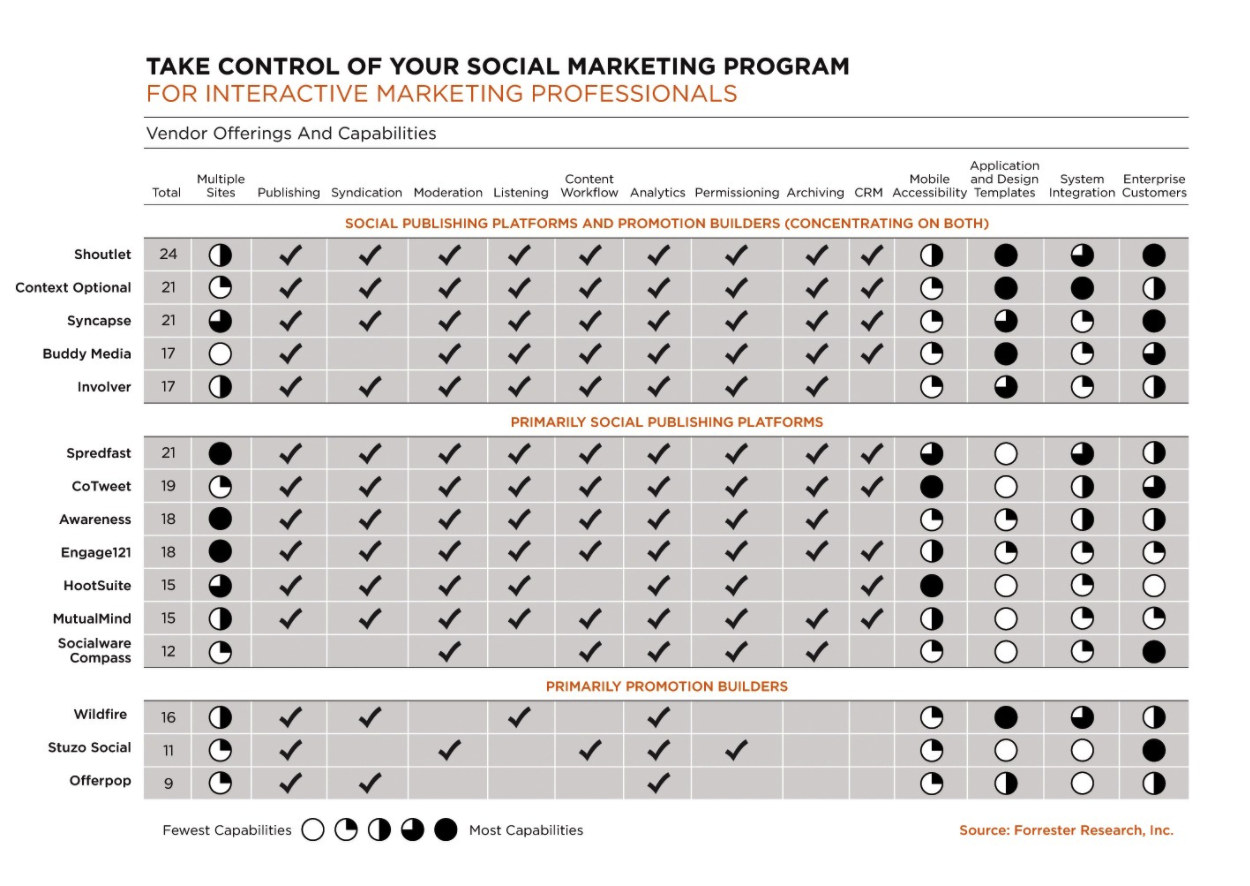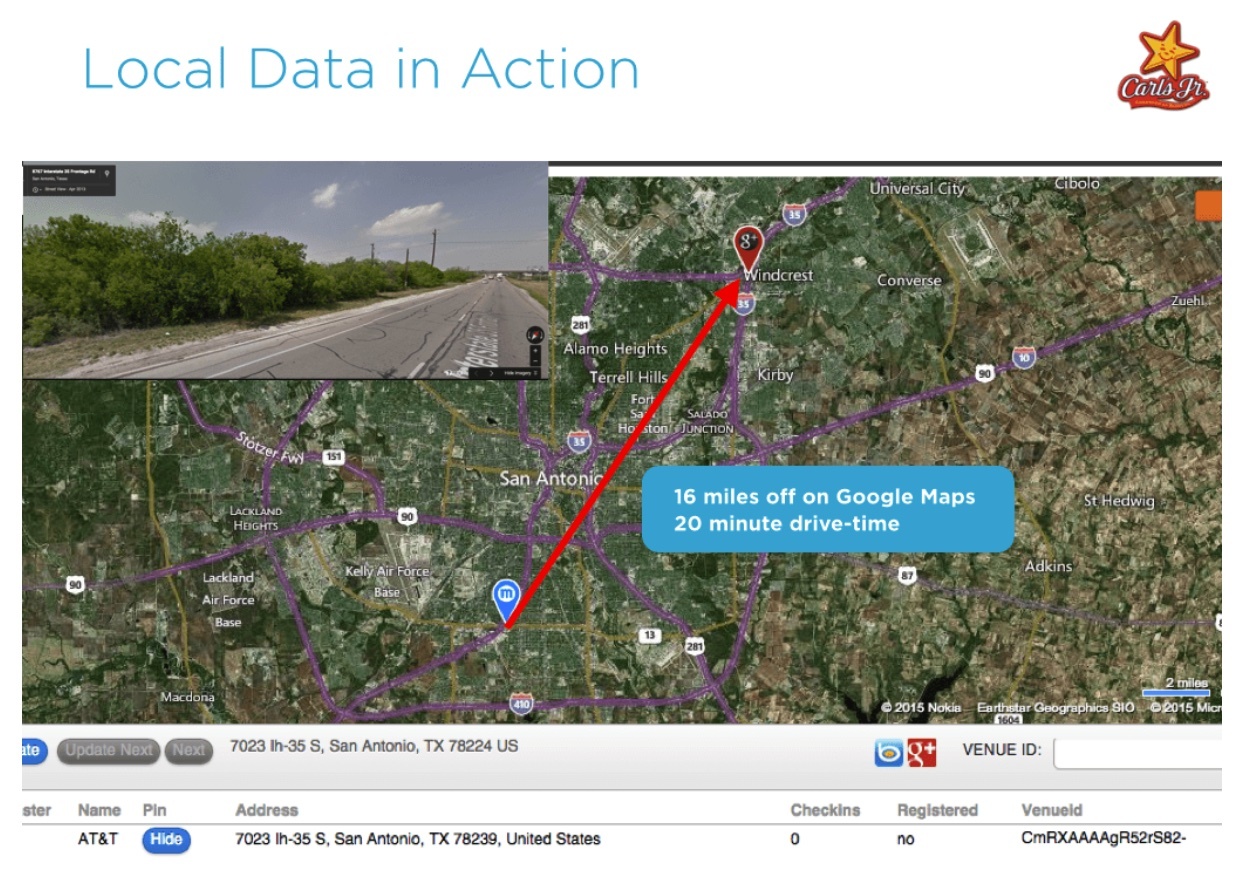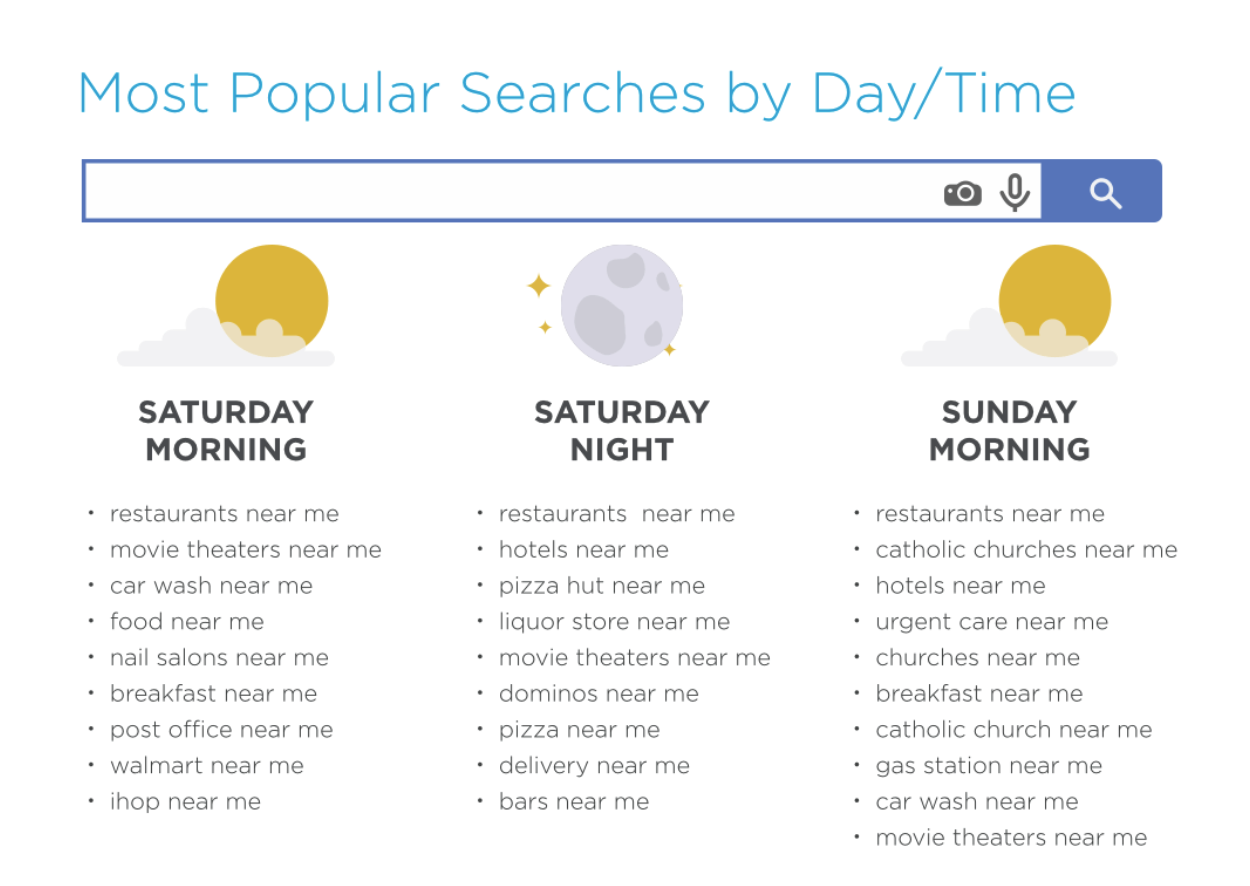
The Localized Marketing Platform: Part 2
The localization of marketing leaves other forms of marketing in the past
"I skate to where the puck is going, not where it's been."
Gretzky's well-known quote is one of the most abused business clichés, but that's because (a) business people love sports analogies and (b) it so perfectly captures the essence of vision.
Vision is the ability to connect the dots of the past and project into the future with the precision of Gretzky skating to a puck. The vision for MomentFeed in 2010 was for a platform that could handle the marketing paradigm of 2015, a paradigm that would be defined by smartphones and mobile computing.
This was ultimately the vision for a new form of marketing...for localized marketing, as discussed in Part I of this series. In Part II, we'll review the landscape of digital marketing solutions (where the puck has been) and how localized marketing is a fundamentally different animal.
Part 1: Prepare for the localization of marketing...or get left behind.
Antiquated Marketing Systems
Before exploring localized marketing more deeply, it's important to understand the current landscape of enterprise marketing solutions. The largest category of the past 10 years is social media management solutions (SMMS). These cover paid, earned, and owned media, and they provide a range of functions from publishing (CMS) and reputation management to customer service and business intelligence. I'll also talk about the local search and SEO spaces, which have grown and transformed in tandem with the smartphone revolution.
In the world of enterprise SMMS, there are three legacy companies: Salesforce, Oracle, and Adobe. These software giants acquired the 1.0 versions of SMMS -- Buddy Media, Vitrue, and Efficient Frontier respectively -- and folded them into what are now "marketing cloud" suites with a number of other disciplines including email and web analytics. As the first SMMS companies were being acquired, the 2.0 versions emerged. These were incrementally better than the first version. They had better UIs, workflow management, and other features that enabled them to capture significant market share among the Fortune 1,000.
The problem is that these 2.0 solutions are still based on the digital marketing paradigm. They're based on a world where consumers access the internet from PCs at home or at work. They enable online marketing for the online world. Meanwhile, consumers took to the real world with their smartphones. If ever there was a paradigm shift in consumer behavior, this was it. Yet these solutions are not equipped to handle it. To borrow another business saying, they're playing checkers while consumers have moved on to chess. Which is to say the physical world is infinitely more complex than the online world.
While a majority of social media activity happens on smartphones today, SMMS manage social channels as if consumers are still sitting at PCs. There's no sense for local context, relevance, or the immediate offline actions that mobile facilitates. As such, there's a disconnect in how consumers are engaging with brands and how brands are managing these relationships through these solutions. One way to know this is true is to observe the complete lack of search in these platforms. Because if a solution is built for this new paradigm -- for mobile consumers -- then it will naturally integrate the search function.

Which brings us to local search and local SEO, which are topics I've covered in the past. Local search is really about location data management and whether consumers can find a business location -- a restaurant, retailer, auto dealer, bank -- using their mobile device. On the other hand, local SEO is how each of these business locations ranks for category search terms e.g. coffee shop, ATM, auto parts, etc.
Local Search: In the PC era, a brand's location information (name, address, phone number, hours of operation, etc.) lived in a handful of directories such as The Yellow Pages, Mapquest, and Google Maps. Consumers used PC browsers to look up an address and then print out directions. If a brand wanted to update these directories, it had to work with third-party data aggregators such as Infogroup, Acxiom, and Localeze, which syndicated the data. This was the first version of local search. The 2.0 version was slightly better. It enabled brands to make direct updates to listing information via APIs rather than work through the aggregators. As with SMMS 2.0, though, this amounted to an incremental improvement on the existing paradigm.
Above: The Google Maps "pin" takes consumers 16 miles from the actual location. This is a universal problem.
The new paradigm of local search, driven by mobile, hinges on the accuracy of lat/long coordinates i.e. the pin on the map. In other words, where the consumer is, where the store is in relation to the consumer, and how to get there all depend on pinpoint lat/long accuracy. No data point has caused as much frustration on the part of consumers -- being directed to the wrong place -- or as much lost revenue for businesses. In local search 1.0 and 2.0, though, the lat/long hardly matters. It's outsourced to third-party geocoding solutions (Google, Yahoo!, Bing, Mapquest) and otherwise taken for granted or ignored.
Optimizing and managing lat/long data is no small task. It requires purpose-built software, a sophisticated verification process, and a system designed to syndicate and reinforce these data (a brand's location data of record) to a complex ecosystem of interconnected sources. What's more, these data are just as important to the brands that own the business locations as they are to the brands that sell goods through them.
Local SEO: In the PC era, it was about optimizing a website for various keywords in order to drive online traffic and conversion. In the mobile era, it's about optimizing individual business locations -- physical places -- for those same keywords in order to drive offline traffic via mobile devices and real-world conversion. Although these sound like similar tasks, they are fundamentally different challenges. Instead of one website with a directory of pages on the internet, you have hundreds or thousands of locations that exist both online and in the physical world. Solving for this requires entirely new technology.
Additionally, the advantage large brands enjoyed with online SEO becomes a disadvantage with offline SEO. In the modern mobile era, size and scale actually undermine local search performance.

Above: The factors and relative weighting that Google uses to rank business locations in a local search query
This is because search engines like Google -- along with Yelp, Bing, and even Facebook and Foursquare -- seek to deliver the most relevant results. Small businesses (SMBs) appear more relevant in a local search. Why? Besides the fact that SMBs are inherently local, it's the content and data generated by the business and its smartphone-enabled customers. Page posts, ratings & reviews, clicks for directions, consistent contact details, and other engagements, both explicit and implicit, all serve to validate the local relevance of a business location. As such, national brands need to behave like local businesses in order to win in local search. In other words, national brands need to do localized marketing.

The Birth of Localized Marketing
With MomentFeed, we didn't set out to build a slightly better SMMS than what came before. We didn't set out to build a slightly better local search or SEO tool. The fundamental flaw with these approaches is that they're iterating on antiquated models. They're rearranging deck chairs on the Titanic. Instead, our vision was for a system of record to manage marketing in the modern mobile era. The realization of this vision is a system for localized marketing, which is driven by three broad trends:
1. Smart Devices: Whether it's smartphones, tablets, or wearables, the mobile consumer is connected to their current location and immediate surroundings through a combination of GPS, WiFi, and Bluetooth signals on a 24/7 basis. These devices account for a majority of their media consumption, both at home and on the go, and they are highly personal by nature. The primary platforms are iOS and Android.
2. Social Media: The global social graph not only connects billions of consumers with one another, thereby facilitating word-of-mouth at scale, it also provides unprecedented audience segmentation and targeting. This was interesting in the PC era, but it's revolutionary in the modern mobile era, as marketers can not only know who and why but where and when with extreme precision and efficiency. The primary channel is Facebook. Others include Twitter, Instagram, YouTube, Pinterest, Yelp, Foursquare, Snapchat, and LinkedIn.
3. Search: The mobile search paradigm is fundamentally different from PCs. Mobile consumers are nearly always searching with local purchase intent, whether it's for a restaurant, movie, or consumer good. Search via smart devices is quietly becoming the conduit for trillions of dollars in offline commerce. The primary channel is Google. Others include Yelp, Bing, Facebook, and Foursquare.
While it's possible for brands to do localized marketing through a menagerie of point solutions, each managed independently in its own silo, MomentFeed is the first and only company to power localized marketing through an integrated platform solution. This not only creates greater efficiencies for enterprise brands but enables a much deeper integration with the organization, its internal systems, and the many individuals who are critical to the marketing function.
Learn how MomentFeed can help your brand win more customers locally.

